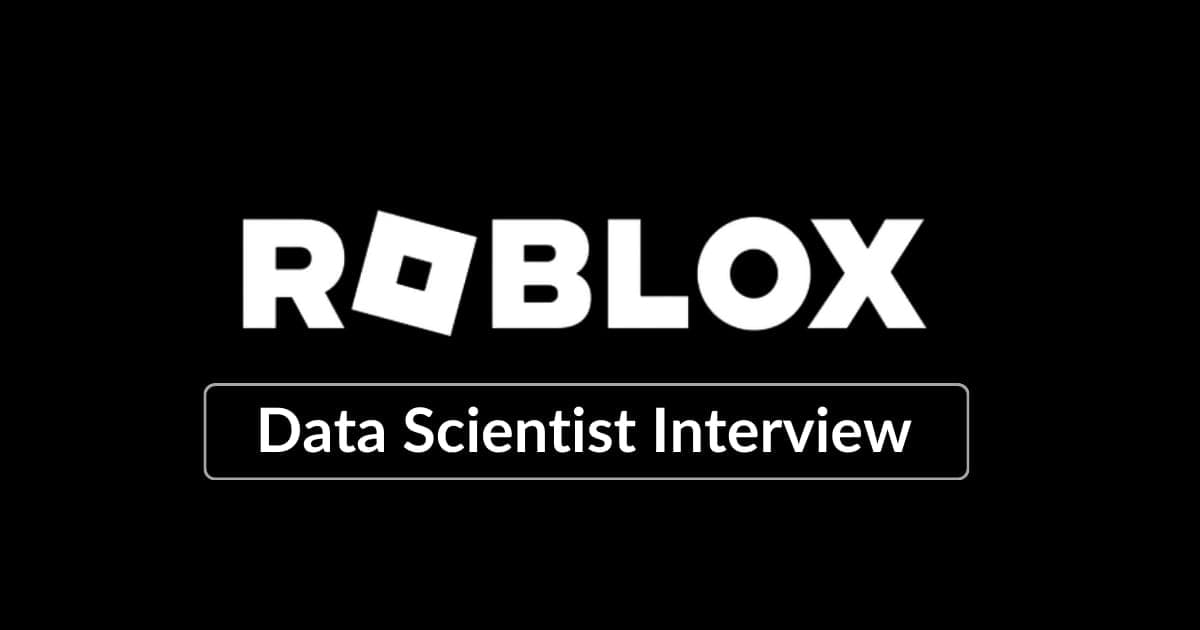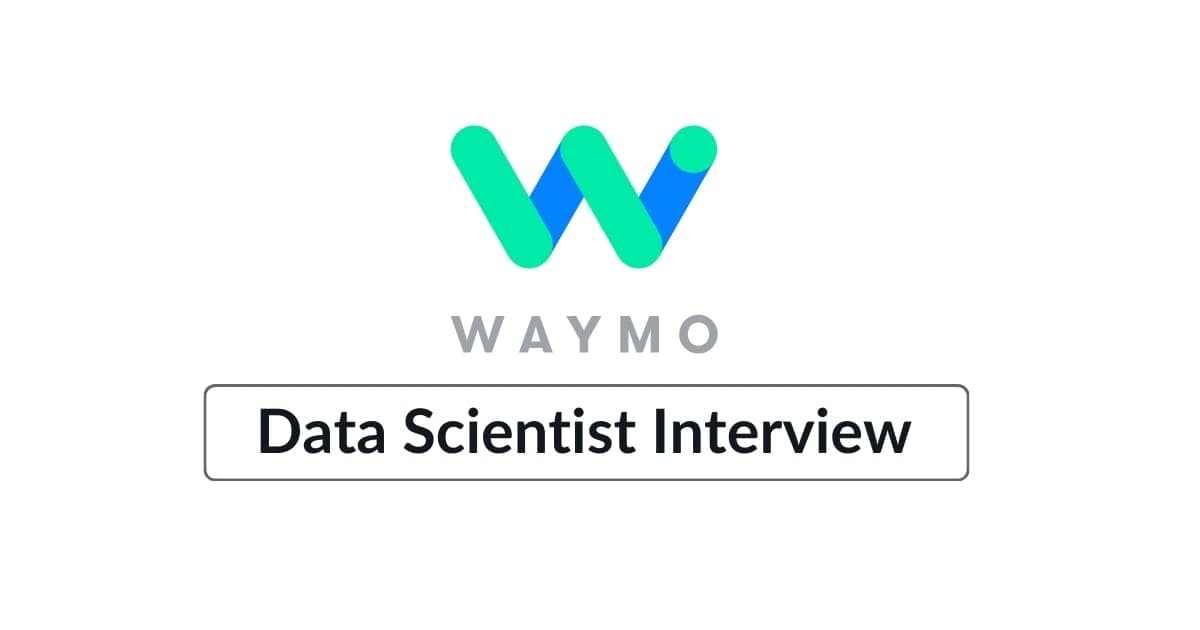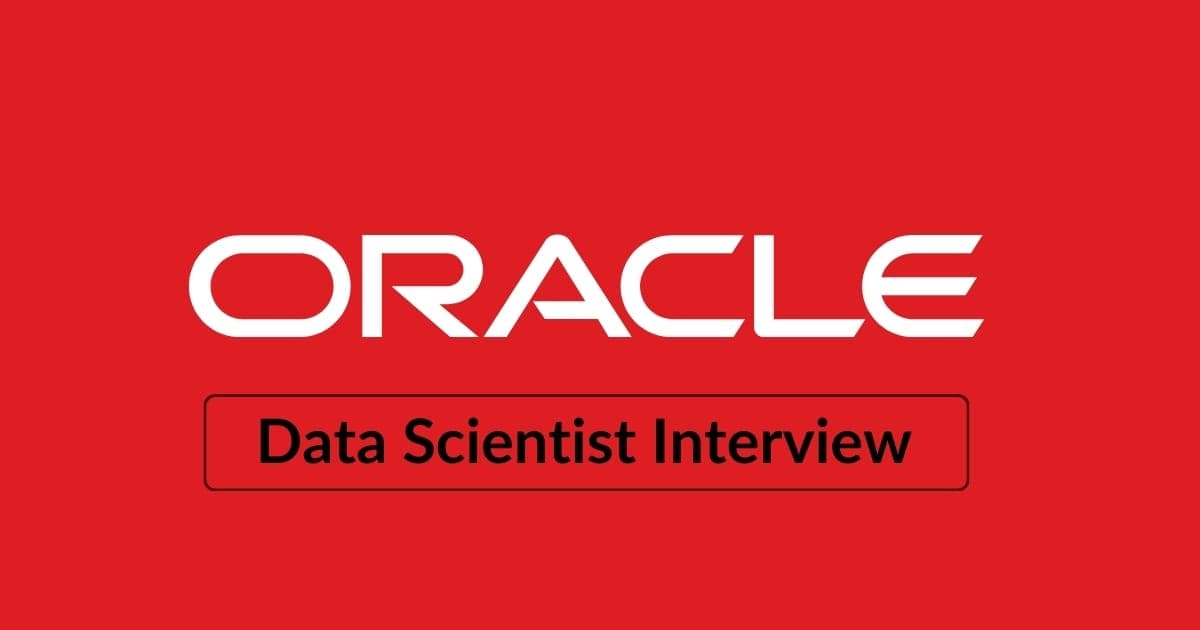Are you preparing for a Data Scientist interview at Canva? This comprehensive guide will provide you with insights into Canva’s interview process, the essential skills they seek, and strategies to help you shine during your interview.
As a leading design platform, Canva is on the lookout for data professionals who can leverage data-driven insights to enhance user experiences and drive innovation. Whether you are an established data scientist or looking to advance your career, understanding Canva’s unique interview approach can give you a significant advantage.
In this blog, we will explore the interview structure, highlight the types of questions you can expect, and share valuable tips to help you navigate each stage with confidence.
Let’s dive in 👇
1. Canva Data Scientist Job
1.1 Role Overview
At Canva, Data Scientists play a pivotal role in redefining how the world experiences design through data-driven innovation. This role requires a combination of technical prowess, analytical insight, and a strategic mindset to extract valuable insights that drive impactful decisions. As a Data Scientist at Canva, you’ll work closely with cross-functional teams to tackle complex challenges and enhance the user experience across Canva’s diverse design platform.
Key Responsibilities:
- Lead and mentor analytics engineers, fostering technical growth and driving platform-level innovations.
- Design and test new capabilities, exploring scalability across Canva’s ecosystem.
- Collaborate with Machine Learning Engineers to develop sustainable and scalable personalization frameworks.
- Act as a technical 'SWAT' team, addressing critical and complex data problems.
- Work closely with data leadership and cross-functional teams to identify opportunities for innovation.
- Optimize data infrastructure and leverage automation for long-term growth.
- Introduce AI-driven solutions to elevate Canva’s growth strategy.
Skills and Qualifications:
- Expert-level skills in SQL and experience with data warehousing solutions like Snowflake, Redshift, or BigQuery.
- Strong understanding of AI/ML integration into data platforms.
- Proficiency in R or Python, with experience handling large datasets.
- Excellent communication skills to simplify complex technical concepts.
- Familiarity with subscription-based business models and collaborative product data sets.
- Hands-on experience with integrating AI solutions into data analytics workflows.
1.2 Compensation and Benefits
Canva offers a competitive compensation package for Data Scientist roles, reflecting its commitment to attracting and retaining top talent in the data and technology sectors. The compensation structure includes a base salary, stock options, and performance bonuses, along with various benefits that support work-life balance and professional development.
Example Compensation Breakdown by Level:
| Level Name | Total Compensation | Base Salary | Stock (/yr) | Bonus |
|---|---|---|---|---|
| B1 (Junior Data Scientist) | A$82.3K | A$82.3K | A$0 | A$0 |
| B2 (Data Scientist) | A$104K | A$84.9K | A$17.3K | A$1.8K |
| B3 (Senior Data Scientist) | A$135K | A$109K | A$24.6K | A$1.9K |
| B4 (Principal Data Scientist) | NA | NA | NA | NA |
Additional Benefits:
- Stock options with a vesting schedule of 25% each year over four years.
- Comprehensive health and wellness benefits.
- Flexible work arrangements to promote work-life balance.
- Opportunities for professional development and continuous learning.
- Employee discounts on Canva products and services.
Tips for Negotiation:
- Research compensation benchmarks for data scientist roles in your region to understand the market range.
- Consider the total compensation package, which includes stock options, bonuses, and benefits alongside the base salary.
- Highlight your unique skills and experiences during negotiations to maximize your offer.
Canva's compensation structure is designed to reward innovation, collaboration, and excellence. For more details, visit Canva’s careers page.
2. Canva Interview Process and Timeline
Average Timeline: 4-6 weeks
2.1 Resume Screen (1-2 Weeks)
The first stage of Canva’s Data Scientist interview process is a resume review. Recruiters assess your background to ensure it aligns with the job requirements. Given the competitive nature of this step, presenting a strong, tailored resume is crucial.
What Canva Looks For:
- Proficiency in Python, SQL, and advanced statistical analysis.
- Experience in A/B Testing, product metrics, and machine learning.
- Projects that demonstrate innovation, business impact, and collaboration.
- Ability to work with large-scale datasets and develop machine learning models.
Tips for Success:
- Highlight experience with data analysis, machine learning, or statistical methods.
- Emphasize projects involving A/B testing, product metrics, or data visualization.
- Use keywords like "data-driven decision-making," "statistical modeling," and "SQL."
- Tailor your resume to showcase alignment with Canva’s mission of empowering the world to design.
2.2 Recruiter Phone Screen (20-30 Minutes)
In this initial call, the recruiter reviews your background, skills, and motivation for applying to Canva. They will provide an overview of the interview process and discuss your fit for the Data Scientist role.
Example Questions:
- Can you describe a time when your analysis directly influenced a business decision?
- What tools and techniques do you use to clean and analyze large datasets?
- How have you contributed to cross-functional team projects?
Prepare a concise summary of your experience, focusing on key accomplishments and business impact.
2.3 Technical Screen (45-60 Minutes)
This round evaluates your technical skills and problem-solving abilities. It typically involves live coding exercises, data analysis questions, and case-based discussions.
Focus Areas:
- SQL: Write queries using joins, aggregations, subqueries, and window functions.
- Statistical Analysis: Explain concepts like hypothesis testing, regression, and causal inference.
- Machine Learning: Discuss model evaluation metrics, bias-variance tradeoffs, and feature engineering.
- Product Case Analysis: Analyze data to generate actionable insights and propose business recommendations.
Preparation Tips:
Practice SQL queries involving real-world scenarios, focusing on user behavior data. Consider mock interviews or coaching sessions to simulate the experience and receive tailored feedback.
2.4 Onsite Interviews (3-5 Hours)
The onsite interview typically consists of multiple rounds with data scientists, managers, and cross-functional partners. Each round is designed to assess specific competencies.
Key Components:
- SQL and Coding Challenges: Solve live exercises that test your ability to manipulate and analyze data effectively.
- Real-World Business Problems: Address complex scenarios involving A/B testing, product metrics, or machine learning models.
- Product Case Studies: Define key metrics, evaluate product performance, and propose data-driven improvements.
- Behavioral Interviews: Discuss past projects, collaboration, and adaptability to demonstrate cultural alignment with Canva.
Preparation Tips:
- Review core data science topics, including statistical testing, experiment design, and machine learning algorithms.
- Research Canva’s products and services, and think about how data science could enhance them.
- Practice structured and clear communication of your solutions, emphasizing actionable insights.
For Personalized Guidance:
Consider resume review by an expert recruiter who works at FAANG to ensure your application stands out. This can help you fine-tune your responses and build confidence.
Canva Data Scientist Interview Questions
1. Probability & Statistics Questions
Probability and statistics questions at Canva assess your understanding of statistical methods and your ability to apply them to real-world data problems.
Example Questions:
- What is the purpose of cross-validation in model evaluation?
- Explain the difference between Type I and Type II errors.
- How do you handle missing data in a dataset?
- Describe a scenario where you would use a t-test versus a chi-square test.
- What is the Central Limit Theorem and why is it important?
- How would you assess the statistical significance of an A/B test?
- Explain the concept of p-value in hypothesis testing.
For more insights on statistics, check out the Applied Statistics Course.
2. Machine Learning Questions
Machine learning questions evaluate your knowledge of algorithms, model building, and problem-solving techniques applicable to Canva’s data-driven products.
Example Questions:
- Explain the bias-variance tradeoff and its impact on model performance.
- How would you design a machine learning model to recommend design templates to users?
- What is the difference between supervised and unsupervised learning?
- Describe a project where you used machine learning to solve a problem.
- How do you handle class imbalance in a dataset?
- What are some techniques to prevent overfitting in a model?
- Explain the concept of feature importance in decision trees.
Enhance your machine learning skills with the Machine Learning Course.
3. SQL Questions
SQL questions assess your ability to manipulate and analyze data using complex queries. Below are example tables Canva might use during the SQL round of the interview:
Users Table:
| UserID | UserName | JoinDate |
|---|---|---|
| 1 | Alice | 2023-01-01 |
| 2 | Bob | 2023-02-01 |
| 3 | Carol | 2023-03-01 |
Designs Table:
| DesignID | UserID | DesignName | CreationDate |
|---|---|---|---|
| 101 | 1 | Summer Poster | 2023-04-10 |
| 102 | 2 | Business Card | 2023-05-15 |
| 103 | 3 | Wedding Invitation | 2023-06-20 |
Example Questions:
- Design Count: Write a query to count the number of designs created by each user.
- Recent Designs: Write a query to find all designs created in the last 30 days.
- User Join Analysis: Write a query to list users who joined before March 2023 and have created at least one design.
- Design Details: Write a query to retrieve the design names and creation dates for all designs by user 'Alice'.
- Join Date Analysis: Write a query to find the average join date of users who have created more than one design.
4. Business Case Studies Questions
Business case studies questions assess your ability to analyze business problems and propose data-driven solutions.
Example Questions:
- How would you evaluate the success of a new feature launched on Canva?
- What metrics would you track to assess user engagement on Canva’s platform?
- Describe a strategy to increase Canva’s market share in a new region.
- How would you approach a decline in user retention on Canva?
- What data would you analyze to identify factors driving user churn?
- Propose a method to optimize Canva’s pricing strategy for premium features.
- How would you design an experiment to test the impact of a new marketing campaign?
Learn how to tackle business cases with the Case in Point Course.
4. How to Prepare for the Canva Data Scientist Interview
4.1 Understand Canva’s Business Model and Products
To excel in open-ended case studies at Canva, it’s crucial to understand their business model and diverse product offerings. Canva operates as a freemium platform, providing a wide range of design tools and templates to users worldwide.
Key Areas to Understand:
- Revenue Streams: How Canva generates income through premium subscriptions, enterprise solutions, and design marketplace transactions.
- User Experience: The role of data science in enhancing user satisfaction and driving innovation across Canva’s design platform.
- Product Ecosystem: How Canva integrates various design tools and templates to create a seamless user experience.
Understanding these aspects will provide context for tackling product and business case questions, such as analyzing user engagement metrics or proposing data-driven strategies for product enhancements.
4.2 Master Canva’s Product Metrics
Familiarity with Canva’s product metrics is essential for excelling in product case and technical interviews.
Key Metrics:
- User Engagement: Daily active users (DAU), session duration, and frequency of design creation.
- Conversion Metrics: Free-to-paid conversion rates, churn rates, and retention rates for premium users.
- Design Metrics: Number of designs created, template usage, and feature adoption rates.
These metrics will help you navigate product case questions and demonstrate your understanding of data’s impact on business decisions.
Familiarizing yourself with these KPIs will help you navigate product case questions and demonstrate strong business acumen.
4.3 Align with Canva’s Mission and Values
Canva’s mission is to empower the world to design. Aligning your preparation with this mission is key to showcasing your cultural fit during interviews.
Core Values:
- Innovation, creativity, and user-centric design.
- Collaboration across diverse teams and disciplines.
- Commitment to data-driven decision-making and problem-solving.
Showcase Your Fit:
Reflect on your experiences where you:
- Used data to create user-centric solutions.
- Innovated on existing processes or products.
- Collaborated effectively with diverse teams to achieve shared goals.
Highlight these examples in behavioral interviews to authentically demonstrate alignment with Canva’s mission and values.
4.4 Strengthen Your SQL and Coding Skills
Canva emphasizes technical rigor, making SQL and programming proficiency essential for success in their data science interviews.
Key Focus Areas:
- SQL Skills:
- Master joins, aggregations, and window functions.
- Practice complex queries using subqueries and Common Table Expressions (CTEs).
- Programming Skills:
- Python: Focus on data manipulation with pandas and NumPy.
- Machine Learning: Brush up on libraries like scikit-learn for model building and evaluation.
Preparation Tips:
- Practice SQL queries on real-world scenarios, such as user behavior analysis.
- Consider Data Scientist Interview Bootcamp for additional practice and insights.
- Be ready to explain your logic and optimization strategies during coding challenges.
4.5 Practice with a Peer or Interview Coach
Simulating the interview experience can significantly improve your confidence and readiness. Mock interviews with a peer or coach can help you refine your answers and receive constructive feedback.
Tips:
- Practice structuring your answers for product case and technical questions.
- Review common behavioral questions to align your responses with Canva’s values.
- Engage with professional coaching services such as DataInterview.com for tailored, in-depth guidance and feedback.
Consider engaging with coaching platforms like DataInterview.com for tailored preparation. Mock interviews will help you build communication skills, anticipate potential challenges, and feel confident during Canva’s interview process.
5. FAQ
- What is the typical interview process for a Data Scientist at Canva?
The interview process generally includes a resume screening, a recruiter phone screen, a technical interview, and onsite interviews. The entire process typically spans 4-6 weeks. - What skills are essential for a Data Scientist role at Canva?
Key skills include proficiency in SQL, Python, and statistical analysis, as well as experience with machine learning, A/B testing, and familiarity with subscription-based business models. - How can I prepare for the technical interviews?
Focus on practicing SQL queries, coding problems in Python, and understanding statistical concepts. Be prepared to discuss real-world data scenarios, particularly those related to user engagement and product metrics. - What should I highlight in my resume for Canva?
Emphasize your experience with data analysis, machine learning projects, and any contributions to cross-functional teams. Tailor your resume to reflect your alignment with Canva’s mission of empowering users through design. - How does Canva evaluate candidates during interviews?
Candidates are assessed on their technical skills, problem-solving abilities, and cultural fit. There is a strong emphasis on collaboration, innovation, and the ability to derive actionable insights from data. - What is Canva’s mission?
Canva’s mission is "to empower the world to design," focusing on making design accessible to everyone through user-friendly tools and resources. - What are the compensation levels for Data Scientists at Canva?
Compensation for Data Scientists at Canva varies by level, with junior roles starting around A$82.3K and senior roles reaching up to A$135K, including stock options and performance bonuses. - What should I know about Canva’s business model for the interview?
Understanding Canva’s freemium model, which includes premium subscriptions and enterprise solutions, is crucial. Familiarity with how data science can enhance user experience and drive product innovation will be beneficial for case study questions. - What are some key metrics Canva tracks for success?
Important metrics include user engagement (DAU, session duration), conversion rates from free to paid subscriptions, and design creation metrics, which help assess the effectiveness of product features. - How can I align my responses with Canva’s mission and values?
Highlight experiences that demonstrate your commitment to user-centric design, innovation, and collaboration. Discuss how you have used data to drive impactful decisions and enhance user experiences.



